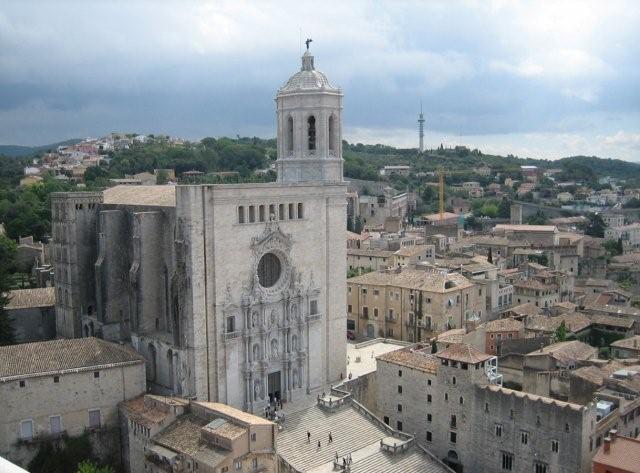| Girona | |
|
|
|
|
1/2 Day |
|
|
Girona
has all the charm of a large city but without the crowds; a very
“human-sized” city that will leave you walking around awestruck with
your eyes wide open and your mouth agape at all it has to offer: its
streets, festivals, cultural activities, restaurants, tourist services and
events. Make the most of your visit at any time of year, and if you can,
visit more than once, because the city is very much alive and there are
always new things to surprise you. Barri
Vell is the name given to the historic centre of Girona, from Gran Via
avenue, located on the line of the medieval wall demolished in the 19th
century, to the Passeig de la Muralla, town wall walk. After
the image of the houses on the Onyar, what opens up is an architectural
legacy blending the brushstrokes of the baroque monumentalism of the
Cathedral stairs and the Pujada de Sant Domènec, or the facade and the
stairs of the church of Sant Feliu, with the elegant sobriety of the
romanesque buildings such as the ancient monastery of Sant Pere de
Galligants or the Arab Baths. A constant reference point in the Girona
skyline is the Cathedral, with the widest gothic nave in Europe, which
rises up beside one of the most singular of urban spaces, El Call, the old
Jewish quarter. The
rehabilitation of the town wall has converted a part of the system of
defence into an exceptional walk where a different perspective of the town
can be enjoyed. From the towers, now turned into privileged view points
you can take pleasure in the spectacular vistas of Girona and surroundings.
Laid
out almost entirely in stone, Girona offers spectacular views of porticoed
squares and steep alleyways. Its most emblematic sight, however, are the
Houses on the Onyar -the river flowing through the city-, painted in
bright colors against the impressing background images of Sant Feliu and
the Cathedral. The original cathedral Girona's was a
Romanesque building (S. XI-XII) which was redesigned by Pere Sacoma in
1312. After a few years of dubitation, Guillem Bofill and Antoni Canet
start the genial project in 1416. The new design consisted of a big Gothic
revival nave, the widest Gothic nave in the world—22.98 m (75.39 ft)—and
the second widest nave of all styles after St. Peter's Basilica in Rome. From the original Romanesque cathedral (consecrated:
September 21, 1038), it has a cloister and tower (called "Torre de
Carlemany"), with outstanding relief sculptures. The cathedral also
has the Tapís de la Creació (Tapestry of the Creation), a very rare
large 11th century tapestry depicting the creation of the world, the
months of the year and Biblical characters. |
|
